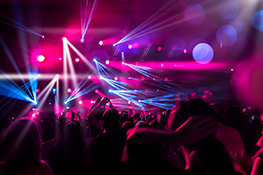Stage Lighting: Beyond the Basics – Advanced Techniques and Strategies
Understanding Color Temperature and its Impact
Moving beyond simply illuminating the stage, mastering color temperature is crucial for creating mood and atmosphere. Understanding the Kelvin (K) scale is fundamental. Cooler temperatures (5000K-6500K) evoke a bright, daylight feel, ideal for energetic scenes. Warmer temperatures (2700K-3000K) create intimacy and a cozy ambiance, perfect for romantic or melancholic moments. The skillful blending of these temperatures, using color mixing and gel filtration, allows for nuanced transitions and dramatic shifts in emotion.
Furthermore, consider the impact of color temperature on skin tones. Incorrect color temperature can wash out actors’ faces or cast unflattering shadows. Careful calibration and the use of color correction gels are essential for achieving natural and flattering skin tones across different lighting setups.
Mastering Light and Shadow: Shaping the Performance
Light and shadow are not merely about visibility; they are powerful tools for storytelling. Advanced techniques involve using gobos (templates placed in front of lights to project patterns), to create specific shapes, textures, and moods. This can range from simple geometric shapes to complex designs, enhancing the thematic elements of the production.
Furthermore, exploring the interplay of light and shadow through strategic placement of fixtures can dramatically alter the perception of space and depth on stage. Understanding how to use backlighting, sidelighting, and key lighting to highlight specific actors, objects, or areas is crucial for guiding the audience’s focus and emphasizing crucial moments within the performance.
Dynamic Lighting: Elevating the Narrative
Static lighting is often insufficient for modern productions. The use of moving lights, automated fixtures, and sophisticated control systems allows for dynamic shifts in lighting, mirroring the ebbs and flows of emotion and action on stage. Programming these movements and effects requires specialized skills and understanding of lighting consoles.
Consider the use of chases, crossfades, and other dynamic effects to create visual interest and punctuate key moments. These techniques can transform a simple scene into a visually stunning spectacle. Learning to use these tools effectively and creatively is a key element of becoming a truly skilled lighting designer.
Integrating Technology: The Future of Stage Lighting
Modern stage lighting is increasingly reliant on technology. LED fixtures offer energy efficiency and color versatility, while DMX control systems allow for intricate and precise lighting programming. Moreover, the integration of software and hardware allows for pre-visualization and remote control, enhancing efficiency and accuracy.
Exploring the possibilities of media servers and video mapping opens up new avenues for creative expression. Projecting images and videos onto stage elements adds another layer of visual richness, creating immersive and engaging theatrical experiences. Keeping abreast of these technological advancements is crucial for any lighting professional.
Practical Considerations and Best Practices
Beyond the technical aspects, consider practical issues such as safety regulations, energy efficiency, and the logistics of set-up and operation. Understanding the capabilities and limitations of different lighting fixtures and the importance of regular maintenance ensures smooth and efficient operations. Moreover, collaboration with other members of the production team, including the director, set designer, and sound engineer is crucial for creating a cohesive and effective overall artistic vision.
Conclusion
Mastering stage lighting involves more than just turning lights on and off. It’s about understanding the nuances of color, shadow, and movement to create an atmosphere, guide the audience’s gaze, and enhance the narrative of a production. By exploring these advanced techniques and staying abreast of new technologies, you can elevate your stage lighting skills and contribute to truly unforgettable theatrical experiences.


 Auditorium Construction Services
Auditorium Construction Services 